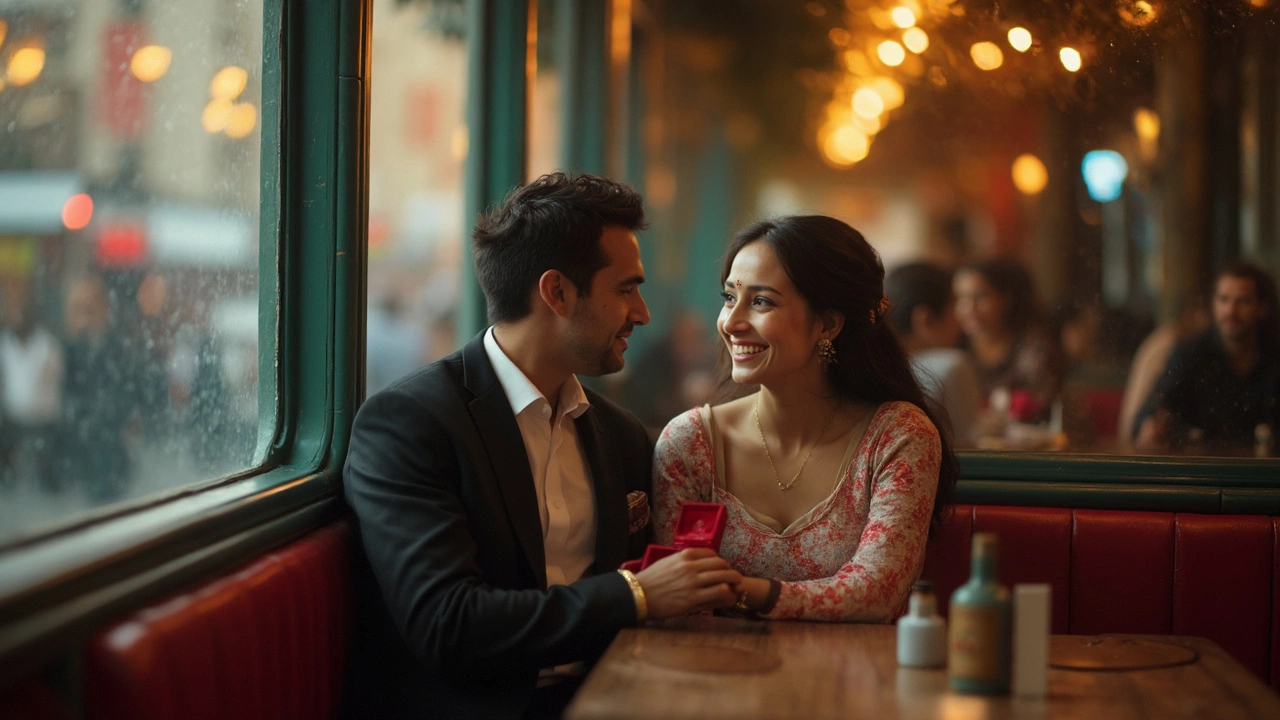Buying a Ring: The Real‑World Guide for Modern Couples
When you start Buying a Ring, you’re not just picking a piece of jewelry; you’re setting a tone for the whole wedding journey. Also known as ring purchase, it blends romance with practical decisions that affect your budget, style, and even the rest of your wedding planning.
One of the biggest sub‑topics you’ll run into is the Engagement Ring, the first piece that usually carries the “yes” moment. Its price often sets the baseline for how you allocate money across the rest of the celebration. That’s why buying a ring is closely tied to your overall Wedding Budget, the total amount you plan to spend on venues, food, photography, and all the little extras. Understanding this link helps you avoid surprise expenses later on.
Key Factors to Consider
The first factor you’ll hear about over and over is the Diamond, the gemstone that most engagement rings feature, evaluated by the 4Cs: cut, color, clarity, and carat weight. Knowing the 4Cs lets you balance sparkle with cost. For example, a well‑cut diamond can look bigger and brighter than a heavier one with a poorer cut, saving you money without compromising on wow factor.
But diamonds aren’t the only option. Lab‑Grown Diamonds, synthetic stones that have the same physical properties as mined diamonds but usually cost 30‑40% less, are gaining traction among couples who want ethical sourcing and a lower price tag. Choosing a lab‑grown stone can free up cash for other wedding elements, like a bigger cake or a live band.
Next up is budgeting strategy. A common rule of thumb – $10,000 for an engagement ring – pops up a lot, but it’s not a hard law. The article "Is $10,000 Enough for an Engagement Ring?" shows you how to break down that figure into actual value: think about setting a maximum, then allocating percentages to the 4Cs and the setting style. If you keep the total under $5,000, you might still land a beautiful ring with a modest carat and an excellent cut.
Financing is another piece of the puzzle. Some couples use credit cards with 0% intro rates, while others tap into a small personal loan. The key is to calculate the total interest you’d pay and compare it to saving a few months of cash. Whatever method you pick, make sure the payment plan fits inside your broader wedding cost spreadsheet.
Don’t forget the non‑diamond alternatives either. Moissanite, white sapphire, and even vintage heirloom pieces can deliver sparkle without the price of a diamond. Each material has its own durability and care needs, so weigh long‑term maintenance when you decide.
Design choices also affect price. A simple solitaire setting is usually cheaper than a halo or a three‑stone design because it uses less metal and fewer stones. However, if you love a certain style, factor in that emotional value – sometimes a slightly higher spend is worth the joy it brings.
When you shop, always ask for a certification. Reputable labs like GIA or IGI provide a report that confirms the stone’s qualities. This document is the proof that protects you if you ever need to resell or insure the ring later on.
Insurance itself is a smart step. A precious ring is an investment, and replacing it after loss or damage can be costly. Policies are often affordable – a few dollars a month – and they give you peace of mind during travel, work, or even the wedding day.
Now, how does all this tie back to the rest of your wedding? The moment you lock in a ring price, you can adjust the remaining budget categories. If you spent less on the ring, you might upgrade the venue or add extra décor. If you splurged a bit, you can trim the floral budget or go for a streamlined travel plan for guests.
One practical tip is to create a simple spreadsheet with three columns: "Ring Cost", "Financing Method", and "Impact on Other Items". Fill in numbers as you get quotes, then you’ll see a clear picture of where you stand. This visual aid turns the abstract idea of "budget balance" into something you can actually act on.
Lastly, remember timing. Buying a ring ahead of the wedding gives you room to negotiate, compare multiple jewelers, and avoid rush‑hour markups. Most vendors offer a 30‑day return window, which is useful if you discover a better option after the initial purchase.
All these pieces – diamond knowledge, alternative stones, financing, insurance, and budget integration – form a solid foundation for anyone buying a ring today. Below you’ll find a curated list of articles that walk you through each step, from low‑cost wedding funding ideas to deep dives on diamond quality, so you can make a confident, well‑rounded decision without feeling overwhelmed.
If you’re wondering how long men usually wait to propose after buying a ring, you’re not alone. This article breaks down the typical timeline, what influences the wait, and how to spot signs a proposal is coming. We’ll dig into real stories, expert advice, and share tips for when you’re the one doing the waiting. Whether you just bought a ring or suspect your partner has, get all the details you need to understand what comes next. Get ready to decode the proposal process without second-guessing every date night.
